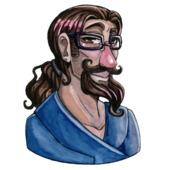Right so i'm making textures/sprite sheets for a simple project which is an isometric hack and slash rpg.
Writing the c++ is fine but the graphics I have no idea...
I want to know the method/software used to create graphics that look the same as seen in the existing game 'Diablo 1'. Here is a screen shot for reference. You can see I have sliced the image up with lines - for those that have made/worked with these types of games before you will understand it.
Thanks!!










